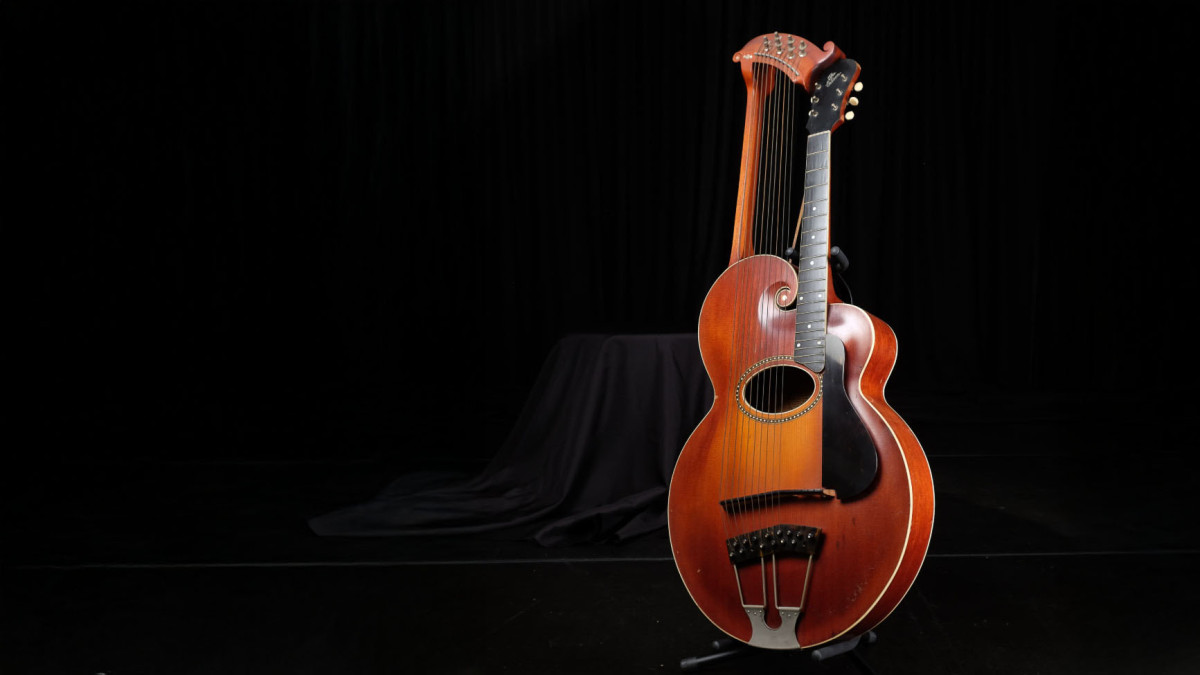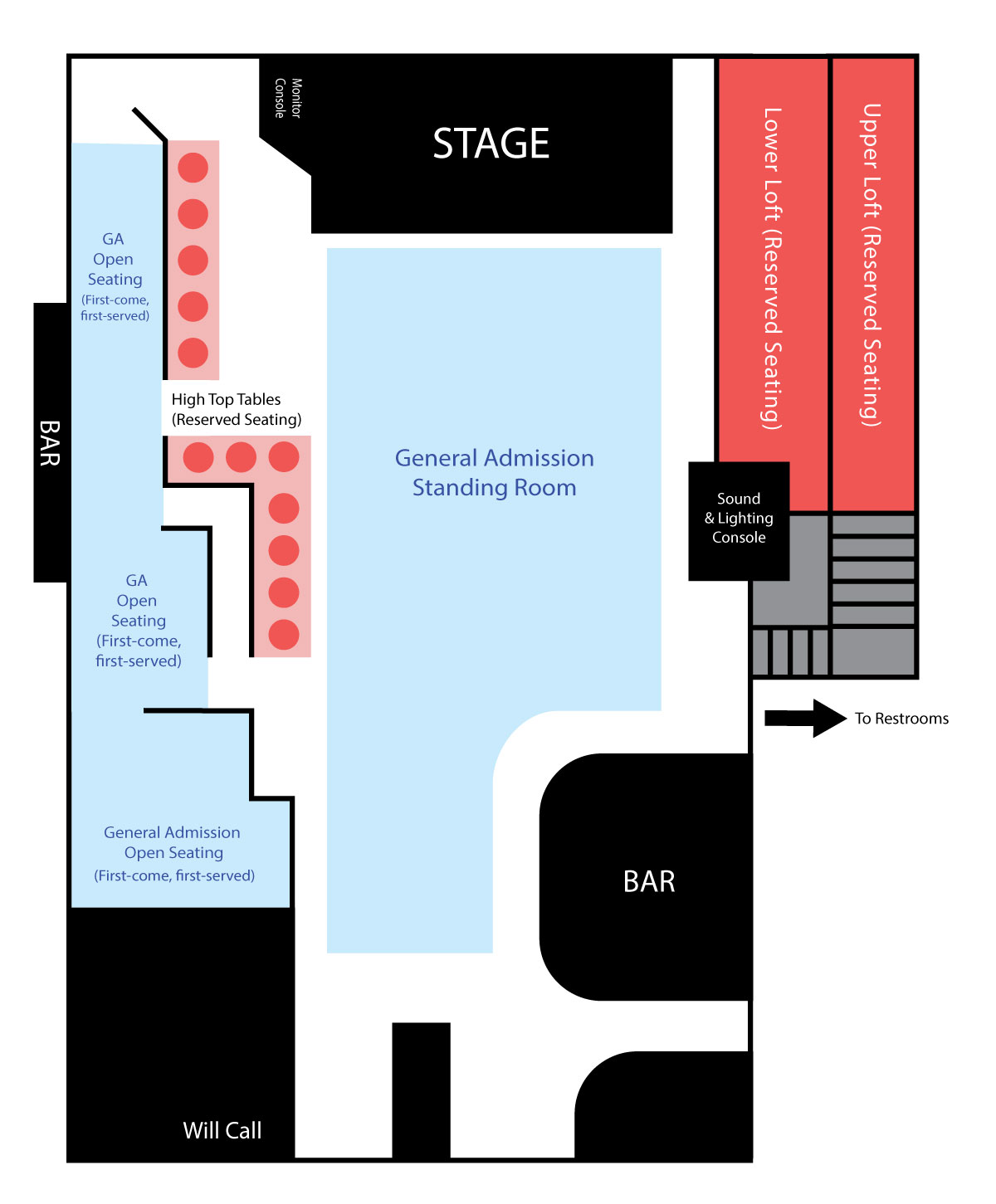
Photo:
Photo: Sonny Portacio, Captured Vision Photography1911 Gibson Style U Harp Guitar
The Museum of Making Music recently acquired an exquisite 1911 Gibson Style U Harp Guitar, now proudly on display in our concert space. This rare instrument embodies the innovative spirit of early 20th-century luthiery and offers a unique glimpse into the evolution of stringed instruments.
Harp guitars have a history that dates back centuries. The concept emerged in Europe during the late 18th century when luthiers began experimenting with adding unstopped or “floating” strings to traditional guitar bodies. These extra strings were designed to expand the instrument's tonal range, complementing the fretted strings. Harp guitars became particularly popular in the 19th and early 20th centuries, as musicians sought instruments capable of greater tonal versatility and expressiveness.
Among the many designs created during this era, the Gibson Style U Harp Guitar, produced from 1902 to 1925, stands out as one of the most ambitious. A standard six-string neck is complemented by additional unfretted sub-bass strings, blending guitar and harp-like qualities. While harp guitars like the Gibson Style U showcased impressive ingenuity, they remained a niche instrument. Their complex design and specialized playing techniques limited their adoption, and the Style U was eventually discontinued. Today, surviving examples are cherished for their historical significance and ability to produce a uniquely layered and ethereal sound.
The Museum of Making Music has a deep appreciation for the harp guitar and its rich history. In 2017, in collaboration with Gregg Miner--collector, recording artist and scholar--the Museum hosted a special exhibition devoted to the instrument, offering visitors an in-depth exploration of its evolution, cultural significance, and remarkable craftsmanship. This exhibition underscored the Museum's commitment to preserving and celebrating the harp guitar's legacy. For more information on this extraordinary exhibition please visit, “Floating Strings: The Remarkable Story of the Harp Guitar in America.”
The harp guitar has seen a resurgence in recent years, fueled by a growing appreciation for its versatility and rich sonic palette. This resurgence has been championed by artists like Muriel Anderson, who has performed at the Museum of Making Music on several occasions. A virtuoso guitarist and harp guitarist, Anderson’s breathtaking performances highlight the beauty and versatility of the instrument. Her artistry not only honors the harp guitar’s storied past but also inspires new generations of musicians to explore its possibilities.
Modern luthiers have also embraced the harp guitar, building upon its legacy with innovative designs. One such luthier is Linda Manzer, whose groundbreaking work has brought harp guitars into contemporary music. Renowned for her artistry and craftsmanship, Manzer has created custom harp guitars for some of the world’s most celebrated musicians, blending tradition with modern ingenuity. Her contributions have played a significant role in reimagining the harp guitar for today’s musicians.
For those wishing to delve deeper into the world of harp guitars, we invite you to visit harpguitars.net. Created by Gregg Miner, this comprehensive website serves the world’s harp guitar community. It preserves over two centuries of history, showcases an extensive collection of harp guitars, and celebrates the instrument’s ongoing evolution. Miner’s passion for harp guitars has brought attention to their fascinating history while inspiring new appreciation for their role in music today.
Miner is also the founder of The Harp Guitar Gathering®, an annual event celebrating the harp guitar, as well as its players, builders, and history. The Gathering strives to promote a greater general awareness of the harp guitar, regardless of musical styles or international borders. For more details, please visit The Harp Guitar Gathering.
The 1911 Gibson Style U at the Museum of Making Music serves as both a historical artifact and a reminder of the enduring spirit of musical innovation. We invite you to experience this extraordinary instrument in person and to explore the remarkable stories of creativity and craftsmanship that define the evolution of music making.

